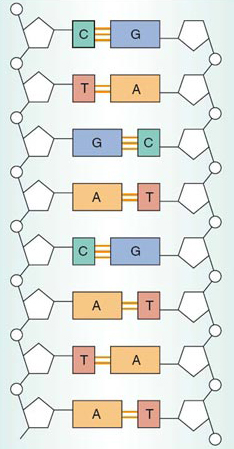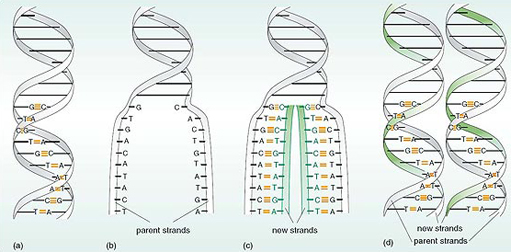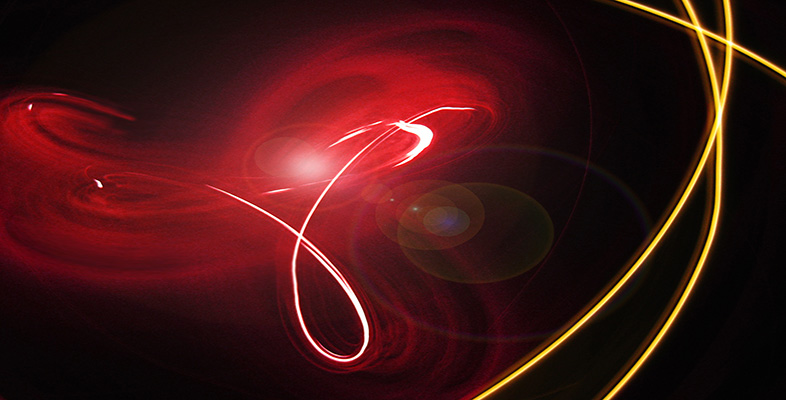1 1.2 How DNA is replicated
Cell division involving the nuclear division of mitosis produces two progeny cells, which contain identical genetic material, which is also identical with that of the original parent cell. This is how a fertilized egg grows into an adult many-celled organism. For one cell to become two new ones with identical genetic material, the DNA in each chromosome must undergo a process in which an identical copy is made.
As noted above, Watson and Crick postulated that DNA base-pairing provides a mechanism by which the DNA might be copied (see Figure 5). This DNA copying mechanism, usually referred to as DNA replication, is the process we consider here.

The separation of the two strands of DNA is an early event in the process of DNA replication. Once the strands have been separated, new DNA strands are synthesized; the enzyme that brings about this process is called DNA polymerase, which adds nucleotides to each separated strand according to the base-pairing rules.
Figure 6 shows the principal stages of DNA replication. The two strands of the double helix shown in Figure 6a unwind, starting at one end, to expose the bases on each strand. The two complementary single strands are shown separated in Figure 6b. Each of these strands now acts as a template, a mould, for DNA replication. The base-pairing rules are the basis of this process; that is, the nucleotides are added in a manner that places complementary bases opposite each other – C always opposite G and vice versa, A always opposite T and vice versa. At the same time, the two new sugar—phosphate backbones are formed. The result is the production of two identical double-stranded DNA molecules (Figure 6c). Initially each double-stranded DNA molecule is unwound, as shown in Figure 6c; later, the paired strands wind around each other to form the characteristic double helix structure, as shown in Figure 6d.
This process has been termed semi-conservative replication, meaning ‘half-conserved replication’. This is because in each new DNA double helix, one of the two original strands is conserved, i.e. is unchanged, from the original parent molecule; these are labelled as the parent strands in Figure 6b. The second strand in each daughter DNA double helix has been newly synthesized in its entirety; these are labelled as the new strands in Figure 6c. Or, to put it crudely, each daughter double helix is only ‘half new’; each has one parent strand and one new strand, as shown in Figure 6d.

Figure 6 shows just a small portion of DNA being replicated. The process continues until the whole of the DNA molecule has been replicated, and the two daughter DNA molecules form the characteristic double-helix structures shown in Figure 10.6d, as opposed to the unwound products of replication shown in Figure 6c. Before the cell can divide to produce identical progeny cells, all of the DNA molecules in the cell have to replicate to produce two identical copies.
This, in outline, is how DNA is copied during most cycles of cell division. If you compare Figures 6a and 6d you will see that both DNA molecules in (d) are a faithful copy of the sequences of bases of the parent molecule in (a).
Click below to view the video.
An important consequence of DNA structure is that the genetic information it contains is copied into more DNA.
